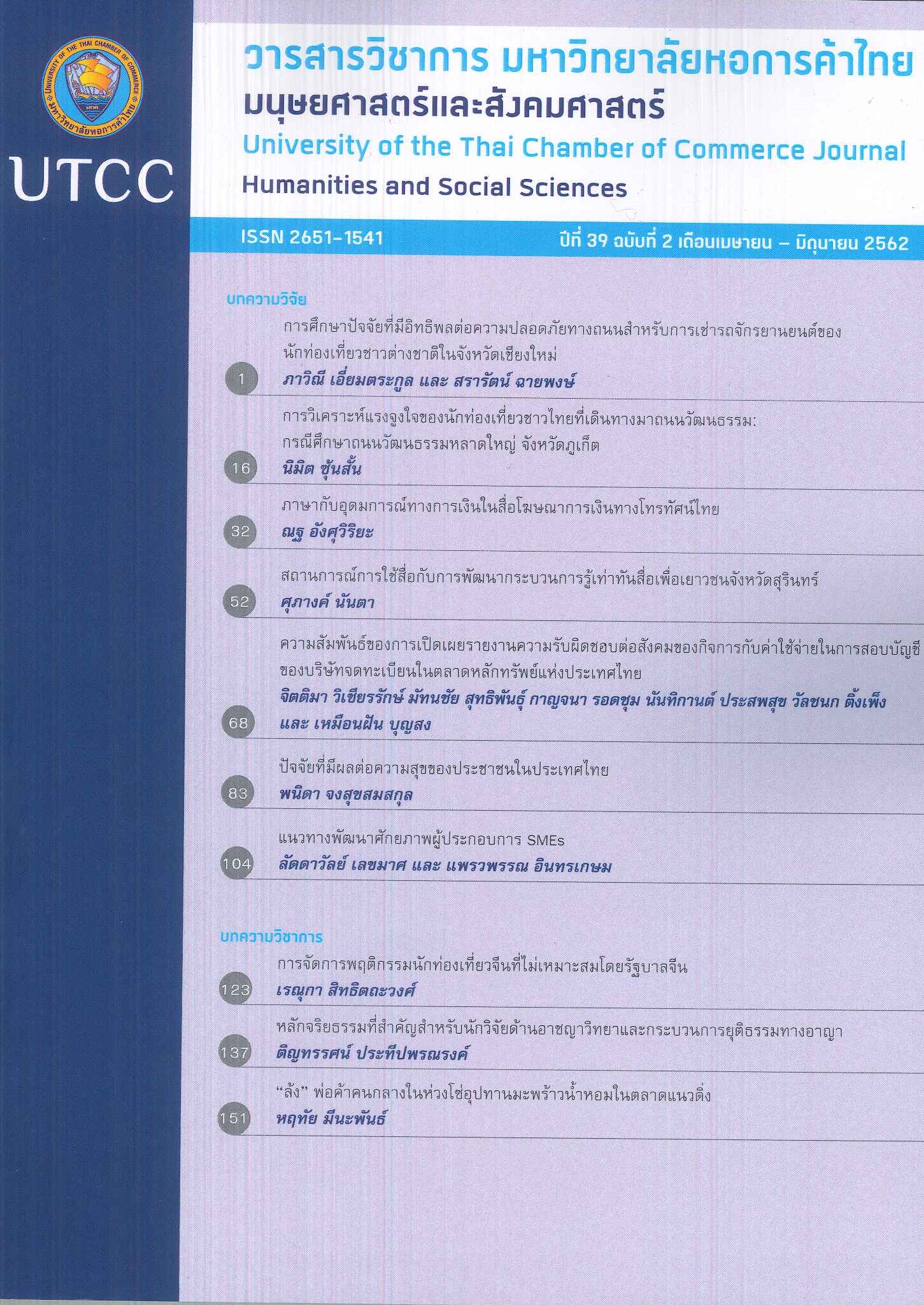Middleman Merchants in Thailand’s Supply Chain of Fragrant Young Coconuts: A Vertical Market Analysis
Main Article Content
Abstract
Fragrant young coconuts (Cocos nucifera Linn) are one of Thailand’s important fruits with planted areas of about 130,000 rais. Each year the total of 300,000 tons of the fruits are harvested with a total value of 3.6 billion baht. There are at least 46,000 households actively engaging in the fragrant young coconut farming, particularly in the Mae Klong and Bangpakong river basins. Because fragrant young coconut farmers are smallholders, they must depend on middleman merchants to act as a market intermediary between the growers and buyers in the market. This paper attempted to analyze the supply chain of Thailand’s fragrant young coconuts vis-a-vis its vertical structure from the upstream market to the midstream market with emphasizing on the role of middleman merchants. The middlemen buy coconuts from the area growers through farm contracting or some relationship-specific arrangements, and sell the products in the midstream market. The growers, nevertheless, may have options to sell their coconuts directly in the market or set up their own social enterprises. By employing a vertical market model, we’re able to analyze the market power of middleman merchants over coconut growers under monopsony and duopsony frameworks.The analysis found that coconut growers would benefit greatly when there is price competition among middleman merchants seeking growers’ output and that the government policy to encourage growers to set up a social enterprise to overcome the middlemen’s market power by selling their collected outputs directly to the market would yield a better profit to its members
Article Details
ลิขสิทธิ์ของบทความ
ผลงานที่ได้รับการตีพิมพ์ถือเป็นลิขสิทธิ์ของมหาวิทยาลัยหอการค้าไทย ห้ามมิให้นำเนื้อหา ทัศนะ หรือข้อคิดเห็นใด ๆ ของผลงานไปทำซ้ำ ดัดแปลง หรือเผยแพร่ ไม่ว่าทั้งหมดหรือบางส่วนโดยไม่ได้รับอนุญาตเป็นลายลักษณ์อักษรจากมหาวิทยาลัยหอการค้าไทยก่อน
References
Baldwin, W. L. (1974). The Thai rice trade as a vertical market network: Structure, performance, and policy implications. Economic Development and Cultural Change, 22(2), 179-197.
Bjorvatn, K., Milford, A. B., & SØrgard, L. (2015). Farmers, middlemen and exporters: A model of market power, pricing and welfare in a vertical supply chain. Review of Development Economic, 19(1), 31-44.
Nguyen, A. T., Dzator, J., & Nadolny, A. (2015). Does contract farming improve productivity and income of farmers?: A review of theory and evidence. The Journal of Developing Areas, 49(6), 531-538.
Siamwalla, A. (1975). A history of rice policies in Thailand. Food Research Institute Studies, 14(3), 233-249.
Siamwalla, A. (1978). Farmers and middlemen: Aspects of agricultural marketing in Thailand. Economic Bulletin for Asia and the Pacific, 29(1), 38-50.
Sodhi, M. S., & Tang, C. S. (2014). Supply-chain research opportunities with the poor as suppliers or distributors in developing countries. Production and Operations Management, 23(9), 1483-1494.
Stifel, L. D. (1975). Imperfect competition in a vertical market network: The case of rubber in Thailand. American Journal of Agricultural Economics, 57(4), 631-640.

